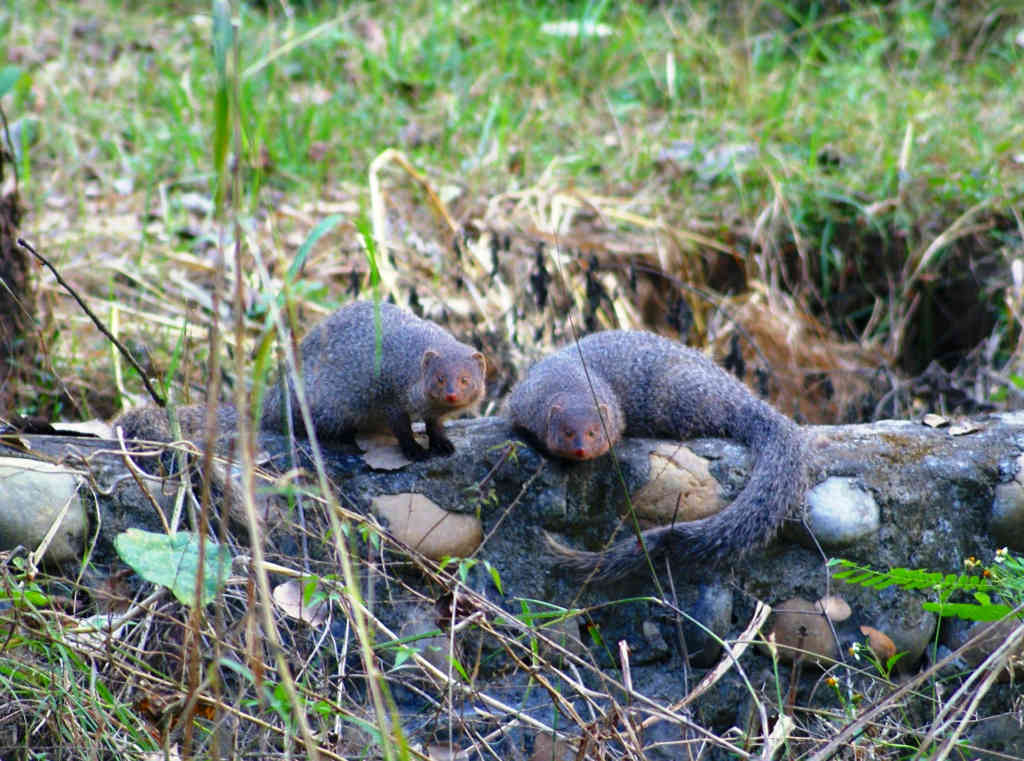
Mongoose (Herpestes edwardsii)
The mongoose is one of the lesser-seen yet ecologically important mammals found in the Great Himalayan National Park (GHNP). Known for its agility, sharp senses, and fearless nature—especially when confronting snakes—the mongoose contributes significantly to the ecological balance of this UNESCO World Heritage Site. Though elusive, mongooses have been observed in lower-altitude forests and foothills of GHNP.
Habitat and Range in GHNP
In GHNP, mongooses are typically found in subtropical and temperate forest zones, often near forest clearings, riverbanks, and areas with dense undergrowth. These habitats offer excellent cover for hunting and nesting. The most likely species present in this region is the Indian grey mongoose (Herpestes edwardsii), which thrives in both wild and human-adjacent environments.
Due to their secretive and solitary behavior, mongooses are rarely seen by casual visitors, but they are a valuable part of the mammalian diversity of the park.
Diet and Behavior
Mongooses are carnivorous, feeding on small mammals, birds, reptiles, insects, and eggs. Their most famous trait is their ability to take on venomous snakes, thanks to their lightning-fast reflexes and partial immunity to snake venom.
They are typically diurnal (active during the day) and use scent marking to establish territories. Quick and observant, they rely heavily on their keen eyesight and strong sense of smell to detect prey and danger.
Role in the Ecosystem
The mongoose serves as a natural pest controller within GHNP’s forest systems. By keeping rodent and snake populations in check, they help maintain a balanced food web. Their presence is a positive sign of a healthy ecosystem with diverse prey and predator relationships.
Conservation Notes
Mongooses are protected under the Wildlife Protection Act of India, and while they are not currently endangered, they face threats from habitat fragmentation and illegal trade for fur and medicinal use in some parts of the country.
The protected environment of GHNP helps provide a safe habitat for mongoose populations to thrive, away from urban pressures. Continued research and monitoring can help reveal more about their population trends and ecological impact in the park.



